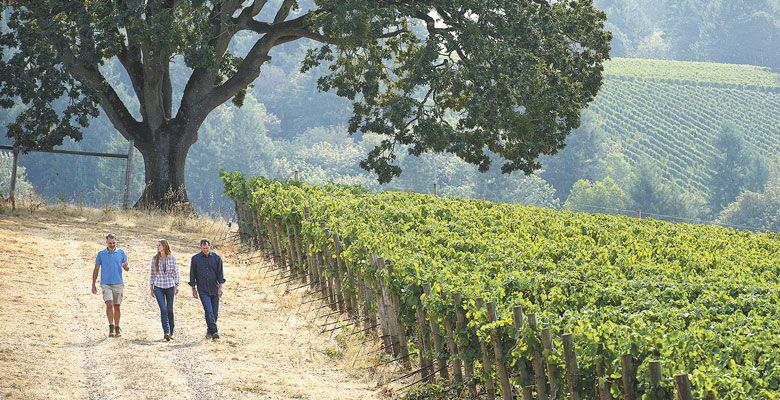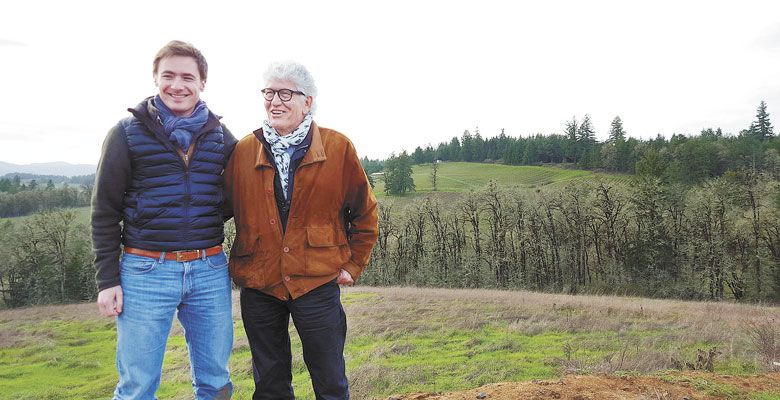The New French Paradox
Connection between Oregon and Burgundy grows stronger
The term “French Paradox” emerged in the ’80s to describe that country’s contradictory high-fat diet coupled with its low incidence of heart disease. Today, another “French Paradox” plays out; this one, in Burgundy. While the region grapples with a new normal of rising weather catastrophes, lower yields, as well as increasing land and production costs, domaines and vignerons search for opportunity elsewhere.
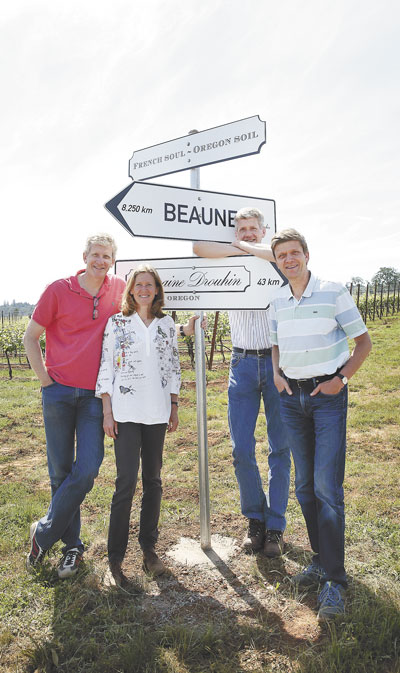
For many Burgundians, that search leads to Oregon. Visionaries like Maison Joseph Drouhin rooted early in its volcanic and sedimentary soils. Other houses followed, like Maison Louis Jadot and Domaine du Comte Liger-Belair, along with legendary vignerons like Dominique Lafon of Domaine des Comtes Lafon. As a result, today’s Old World Burgundy and New World Oregon enjoy a complementary relationship based upon an overarching respect for Pinot Noir in particular, for terroir in general and for excellence overall.
Thibault Gagey, head of operations for Maison Louis Jadot’s Oregon project, Rèsonance, explained, “Burgundy has all this history, while Oregon is so new. We are really fortunate in Burgundy in that we have the tradition; Oregon is a new wine world.
“What we like in Oregon is that it’s a small wine region, people are down to earth. They are growers; they are very much into growing grapes,” he continued. “Their spirit is [similar] to Burgundy. To be honest, we love it. We love the place. We also love the people.”
Jean-Nicolas Méo, owner of Méo-Camuzet in the Côte d’Or and winemaker/co-founder of the Willamette Valley’s Domaine Nicolas-Jay, concurred. “I often joke that in Oregon, I feel like I’m 25 years old again! The whole experience is very exciting and rejuvenating. But actually, this is not about going back in time; when you are young, you are not totally aware of what you are doing, and some of your actions are very instinctive or lacking nuances. With my experience now, I know more of what I am looking for in a great wine, and I am more ready to let the site, vintage and wine express themselves.”
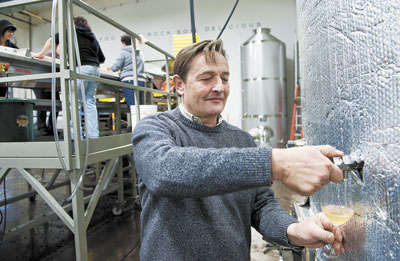
“Oregon is just such a great place to be right now,” agreed Thomas Savre, winemaker at Lingua Franca in Eola-Amity Hills. “You don’t have the limitations of the French AOC [France’s wine regulatory body], which controls quality but also restrains in work flow in the vineyard and every other aspect of winegrowing and winemaking.
“Oregon opens more doors to making great wines, and is getting better,” Savre continued. “It has less regulations and different terroir, so you learn to do the best you can. Plus, it has an amazing diversity of people that work together to be the best.”
Louis-Michel Liger-Belair of Chapter 24 Vineyards admits his fondness for the more laid-back nature of winemaking in Oregon.
“All vignerons from Burgundy, we have such pressure on our wines. People expect certain stereotypes that they want to see every year,” he said. “We have no opportunity to play around in Burgundy; we can’t afford to make any mistakes. In Oregon, we can blend wines from different areas and try new things.”
“In some ways, working in Burgundy is easier, because it’s highly regulated,” confessed Matthieu Gille, winemaker at Lachini Vineyards in the Chehalem Mountains and third-generation vigneron at his family’s domaine in Nuits-Saint-Georges. “It’s all written down; you’re told what to do. We have five agencies looking at us: how to plant, pick, when to harvest.
“Also in Burgundy, there’s an emphasis on knowing where the grapes are coming from,” Gille added. “Wines are made in the vineyards. Everything in Burgundy is important: the weather, when the fruit was picked — not just technique. When you make wine, you can do an essay with perfect grammar or you can make poetry; that’s what we try to do in Burgundy.
“So trying to make wine in Oregon the way I do in Burgundy is challenging,” he continued. “For example, in Burgundy, you have Pinot Noir and Chardonnay, and some Aligoté, and very few other [varietals]. But in Oregon, I work with Pinot Noir, Chardonnay, Pinot Gris, Mourvèdre, Cabernet Sauvignon and Muscadet — a wider range of products to craft. I could never do that in Burgundy.”
“I think what Matthieu brings to winemaking here is a cautious approach,” offered owner Ron Lachini. “The more you manipulate wine, the less that wine has soul, complexity. The technically trained here in the U.S. have a tendency to ‘fix things’ with science, which is not art. You have to learn to adjust to what Mother Nature gives you. That means we can react differently depending upon where the fruit is sourced.”
Brave New World
Oregon also provides vignerons a position to prove themselves in ways not possible in Burgundy. Ironically, young turk Thomas Savre of Lingua Franca interned at many prestigious wineries worldwide in his career, but he fell in love with Oregon wines as an intern at Domaine de la Romanée Conti [DRC].
“I was asked to pick three bottles from the [DRC] cellar for a random lunch,” shares Savre, “So I grabbed a ’95 Cristom Marjorie Vineyard Pinot Noir and two other wines. I was blown away by that Cristom. What’s funny is that since then, I have become friends with Steve [Doerner, the winemaker at Cristom] and his wife. But it was that wine that started me loving Oregon Pinot, wines like Bergström, Brick House, Walter Scott... Wines I really love.”
That passion pulled him stateside and eventually an assistant winemaker job at Evening Land Vineyards. When the ownership structure at Evening Land devolved, former partner Larry Stone moved on to purchase what is now Lingua Franca Winery.
Thus marks another key component in the successful symbiosis between Oregon and Burgundy: a complex, intricately entwined, carefully tended selection massale of international relationships.
“When I started [Lingua Franca], I thought I would just grow grapes,” Stone explained. “Dominique [Lafon] was heavily involved in Evening Land at the time. But Dominique wanted to have more of a say in what’s going on, which he does at Lingua Franca. Thomas came on here [at Lingua Franca] because he viewed Dominique as an icon of Burgundy. We have a little more freedom to make decisions because Thomas has such a great relationship with Dominique; Dominique trusts his judgement.”
Asked about working with his mentor, Lafon, in Oregon’s brave New World, Savre laughed, “Working with Dominique is great! If you know him, he’s like a little kid on the playground, always wanting to try new things. This is a perfect project for him, buying fruit from 20 different AVAs. It’s unique for him to learn new sites, plus, he has this new vineyard [Lingua Franca’s estate], so he’s being introduced to new technology.
“It’s exciting. It’s like a rebirth for him,” Savre added. “We have a lot of fun. Because I worked at Dujac & DRC, I’ve used whole cluster. Dominique doesn’t like whole cluster, but here in Oregon, I’ve challenged him, saying, ‘Come on, man, let’s try whole cluster!’”
Terroir as Touchstone
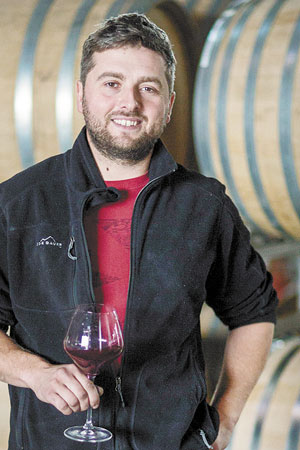
Of course, you can take the Burgundian out of Burgundy, but you can’t take the Burgundy out of the Burgundian. Terroir remains a touchstone, perhaps best exemplified by nobleman Liger-Belair, fifth-generation patrician of Domaine du Comte Liger-Belair with family holdings that include France’s smallest appellation, Grand Cru of La Romanée.
As a partner with former Evening Land impresario Mark Tarlov at Chapter 24 Vineyards, Liger-Belair contends, “Ninety-five percent of the quality of wine lies in the vineyard.” To that end, the aristocrat has engaged Chilean terroir specialist Pedro Parra to analyze Chapter 24’s soils, meter by meter, foot by foot.
“One of the keys for the future in Oregon is understanding the soils,” Liger-Belair said. “In the past, people attributed differences in a wine’s character to weather and so on. By fine-tuning the soils, we can show the difference within the vineyard, one foot to another. And in a few years, we may be able to create levels similar to those in Burgundy: Regional, Village, Premier for sure, maybe Grand Cru in the future. The same thing the monks did in Burgundy a thousand years ago, we can do now in Oregon; but we can now study quickly, because of these technical tools.”
Méo mentions another Burgundian concept transplanted to Oregon: “house style.”
“We’re actually doing both: building a house style, to get people interested in our wines, and we also work on and offer site-specific wines,” he said. “Blends are, of course, dominant, and they certainly fulfill an educational role for the market, but at the point where the region is currently, you should certainly not ignore the potential of a number of places to produce great wines. Yamhill-Carlton and Dundee Hills are two AVAs we particularly like, and it is, of course, impossible for me not to mention Bishop Creek; buying that vineyard is probably the best thing that has happened for our venture in Oregon! I really have the feeling there we’re participating in the birth and development of a great wine.”
Sense of Place
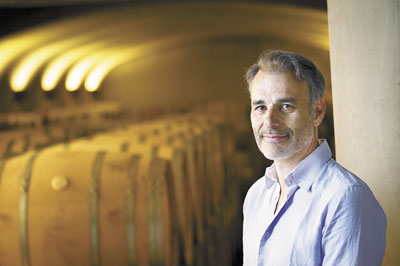
Clearly, Oregon’s unique sense of place resonates with Burgundians in a way other wine regions do not.
“At Jadot,” reflected Gagey, “we have been doing [making wine] for over 150 years, but today, it’s more difficult; Burgundy is small, it will never increase [in size]. But because of the world today, we are able to travel easier, and to sell wine in many places.
“My father had in mind to start a project outside of Burgundy, and we went to several places that can grow Pinot Noir very well. We also knew about Oregon — my father [Pierre-Henri Gagey, President of Maison Louis Jadot], myself, Jacques [Jacques Lardiere, former winemaker for Maison Louis Jadot coaxed out of retirement by Pierre-Henri Gagey to make wine for Rèsonance] through Drouhin.
Gagey continued, “This project was proposed to us in 2013, and so we went, and we had a good impression. I guess you could say we kind of had a crush on the place; we liked it on first sight. We had a feeling this was a special place. We tasted wines made from the fruit by different winemakers all the way back to 1990; we all felt that the wines had a sense of place. The sense of place for us in Burgundy is very important; it’s key when making wine in Burgundy.”
Past and Future
“When we talk about Oregon,” Gagey points out, “the Drouhins [Domaine Drouhin Oregon] have been here for 30 years. When Robert [Drouhin] started, it was risky. It has been very successful. They have built a great domaine. We are just starting. We cannot compare. What Rèsonance has it taught us is it’s good to have this type of project, because it brings something new, fresh, young, exciting. It brings some youth to Maison Louis Jadot.”
Savre concludes by clarifying a common misconception about the relationship between the two different wine regions.
“Burgundy and Oregon are often assimilated together,” he explained. “They don’t want to make Burgundy wine, they want to make Oregon wine, but they also want to honor the tradition, the quality of Burgundy. I’m not worried about Burgundy vs. Oregon. Neither one [is] trying to be better than the other.”
Méo sums up his experiences with the “French Paradox” this way, “Even though it is sometimes hard, I try not to mention any Burgundy names when speaking about our Oregon wine, but yes, I have experienced some reminiscences, and some wines and sites that echo what I am doing in Burgundy, wines of precision, elegance, power, finesse, structure, that serve as a definition of a great wine. This is very exciting, and a validation of the whole process of coming to Oregon.”
L.M. Archer, FWS, is a freelance wine, food and travel writer and editor of binNotes.


